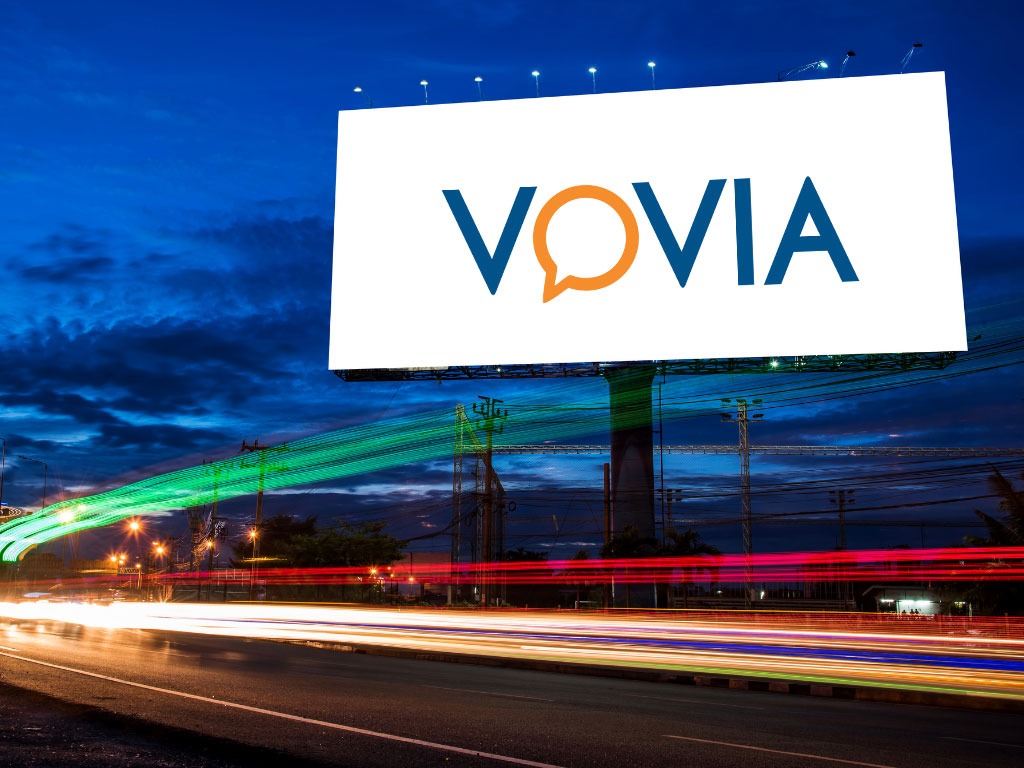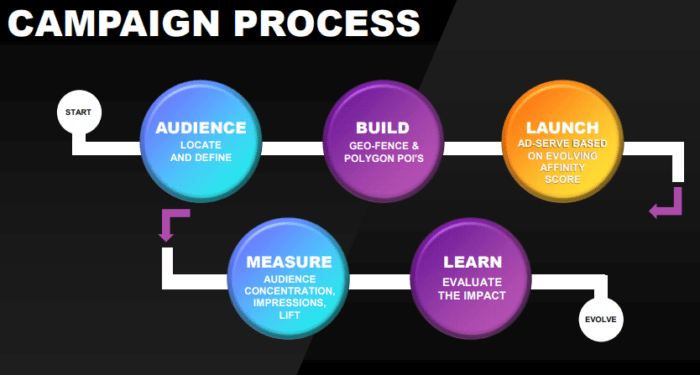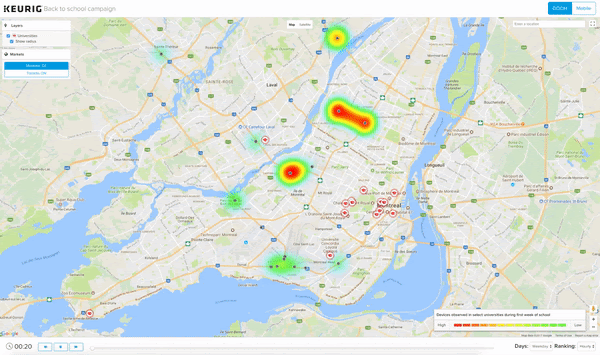What is Programmatic Out of Home?
We love out of home (OOH) advertising at Vovia! While there are many formats and opportunities in the OOH space, one thing is certain; it is a tried and true medium to drive mass awareness. Fun fact, the earliest recorded leasing of billboards occurred in 1867! So, while this idea has been around for a while, there have been some incredible innovations and advancements in recent years.

As we have seen with online radio and online or connected TV, adding digital metrics, measurement and tracking to offline media helps us reach the consumers where they are, and is blurring the line between what was traditionally considered to be online and offline. Programmatic Out of Home is the latest offline channel to move one step closer to the digital world with some important strategic advantages and use cases.
Programmatic Digital Out of Home (DOOH)
Programmatic Digital Out of Home (DOOH) refers to the ‘automated buying and selling of digital billboards and screens’. Just like online advertising, inventory is bought and sold through a Demand side platform (DSP) or Supply Side Platform(SSP).
Buyers set parameters of what media they want to buy on a DOOH DSP, such as Hivestack, to target a specific audience. Like any other DSP, you can layer on extra data and triggers to target a particular audience. When those conditions are met, the media is purchased automatically. In other words, ads will be served on digital boards when there is a high concentration of the target audience in the area. Unlike digital programmatic for banner ads and websites, DOOH is a “one-to-many” medium, so it will always serve on screens that index high for your audience, but will also reach others outside of your audience by nature of the OOH placement.

Why Use Programmatic Out of Home Advertising?
Data.
Programmatic DOOH has all the benefits of regular DOOH, but is improved by the richness of its data. For example, data collected from mobile device IDs help us understand where consumers go, how they spend their time, and which paths they take. This ultimately allows brands to activate DOOH when and where that audience is most likely to be.
There are so many fun and interesting ways to layer on data to reach customers. Here are a few examples:
- Geofencing locations
- Polygon real world locations to locate visitors based on mobile device location history (ie. Coffee shops, parks, schools, etc.)
- Tourism Jasper ran a campaign targeting people who had visited competitor ski resorts by capturing their mobile device IDs. DOOH creative was served on boards in Calgary where there was a high concentration of this audience
- Environics/custom audience data
- Collecting device IDs of people who live in FSAs that over-index for a specific segment
- Nordstrom Rack ran a campaign targeting Females 18-54 with a household income of $50-$100k to drive awareness of their new store opening in Lancaster PA
- Weather or dayparting
- Have different creative served depending on the weather or the time of day
Check out this example of how foodora used weather, time of day and location data in this programmatic DOOH campaign.
The benefits of data also extend to measurement and reporting on the campaign. We can track real time data through the DSP’s dashboard to monitor impressions by screen, format, time of day, etc. Hivestack, the Programmatic Out of Home DSP that we favour, provides heat maps to help visualize how DOOH locations evolve over time, and throughout any given day. This heat map is visualized below:

We can also layer on foot traffic attribution and lift studies to see how effective the ads were at driving people to visit your store or location.
Convenience
Running digital OOH programmatically provides the convenience to create, run, optimize, and report on a campaign all within the DSP. Instead of working with multiple partners individually, everything is done in one platform. This can save a lot of time negotiating, trafficking creative and reporting because you do not need to work with multiple reps if you want inventory across a variety of partners.
Flexibility
Programmatic campaigns provide flexibility because you are not tied to a contract and don’t need to commit to a minimum spend upfront. Since everything is controlled through the DSP, pausing a campaign or changing creative can be done quickly and at any moment. This is especially something to consider with the uncertainties of COVID, because it allows clients to start a campaign without having to worry about cancellation penalties if they need to pause or change gears suddenly.
Are There any Disadvantages to Programmatic OOH?
As mentioned before, digital out of home is still a one-to-many channel, no matter how it is purchased. It is essential to look at the objective and targets of the campaign to determine the best purchase decision. There is a premium cost to layer on data so while we can do some really niche targeting, it is important to determine when we should. If the goal of the campaign is to drive mass awareness to adults in the age range of 25-54, the premium cost to layer on data may not be worth it.
Additionally, programmatic space is often non-guaranteed. What this means is inventory will be prioritized for direct buys first, possibly only leaving a portion of their inventory open for programmatic buying. Similar to other programmatic buying, we may need to work with partners directly to access premium inventory.
Final Thoughts
Programmatic digital OOH is the latest and greatest tool for offline marketers, but be careful to not be fooled by its shininess. Just because we can layer on an abundance or targeting data does not mean we always should. Be considerate of digital OOH’s uniqueness when it comes to data as it will always have a one-to-many relationship with audiences, even when purchased via programmatic. Always ask if you need a certain data layer prior to applying it and understand any cost or scale implications that could occur.
